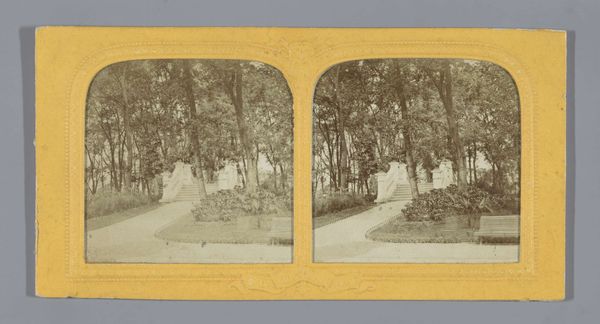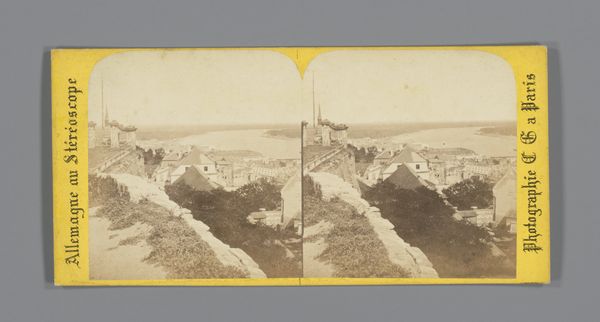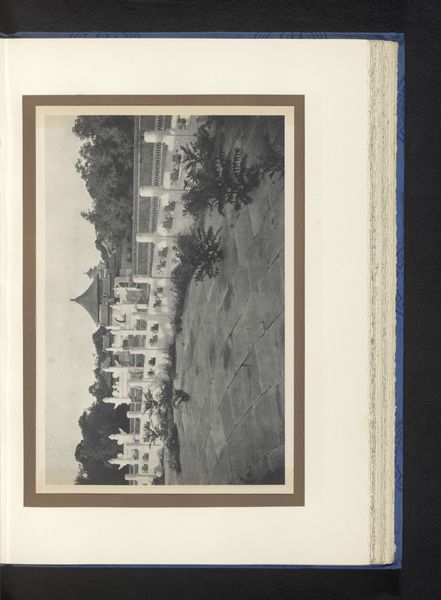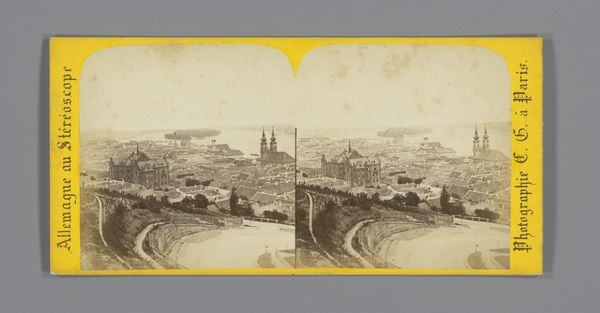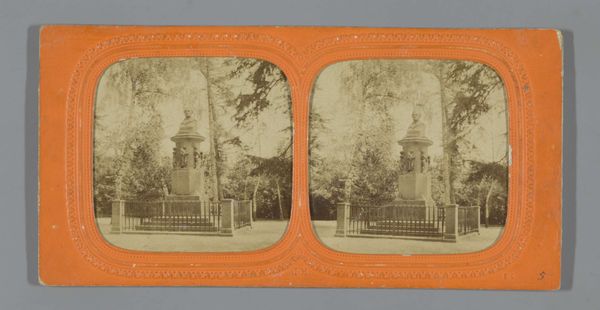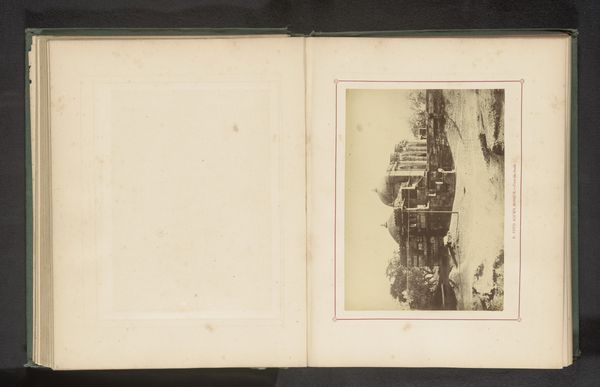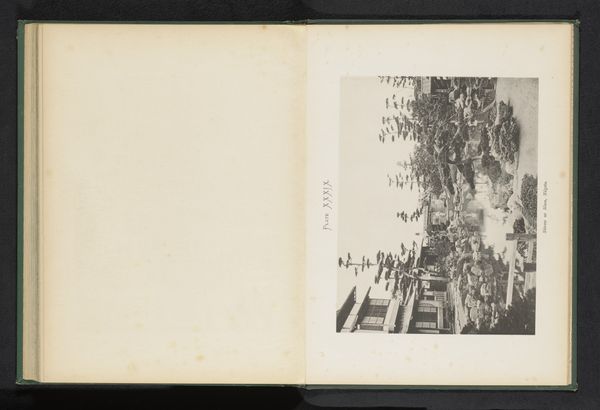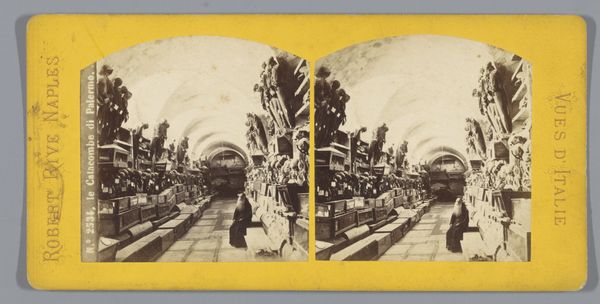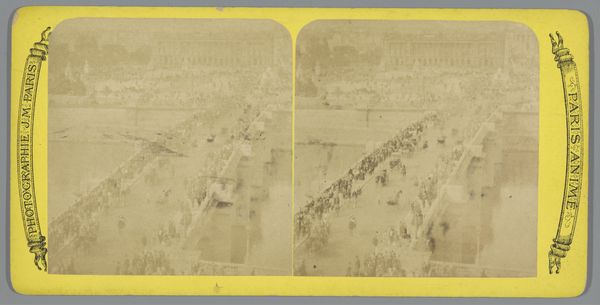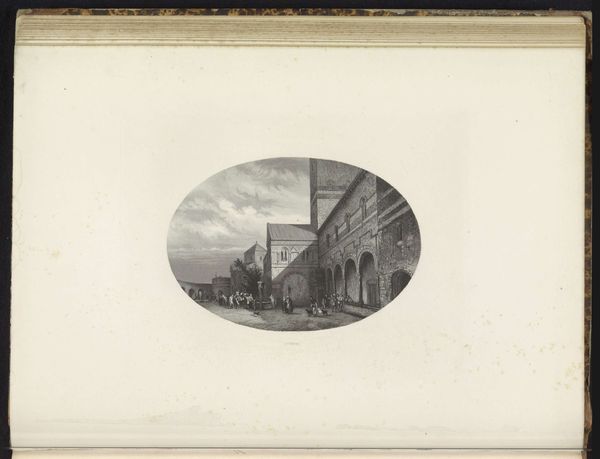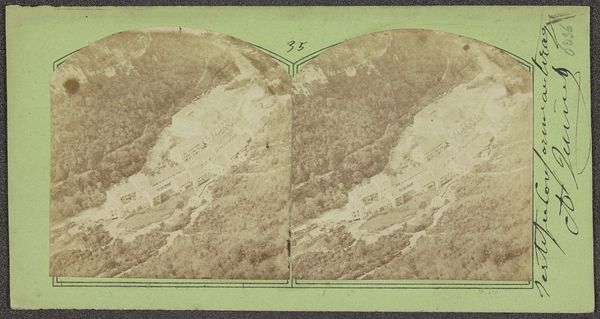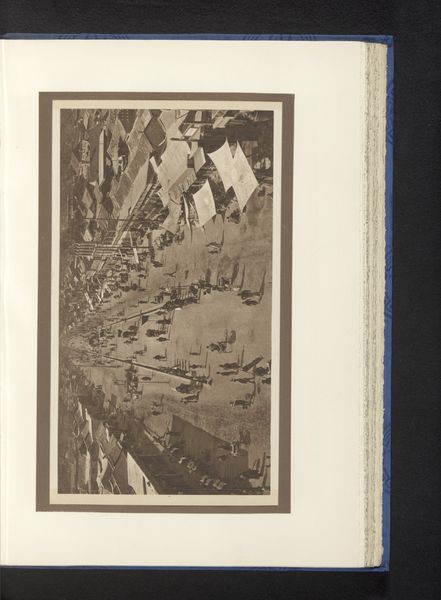
photography
#
street-photography
#
photography
#
cityscape
Dimensions: height 86 mm, width 173 mm
Copyright: Rijks Museum: Open Domain
Curator: This is a photograph titled "Gezicht op de Boulevard Montmartre in Parijs," taken by Hippolyte Jouvin, likely before 1880. What's your first take on it? Editor: It feels overwhelmingly… dusty. The sepia tone mutes the scene, creating a kind of barrier between us and the figures bustling in the street. You sense the past clinging to every detail. Curator: Precisely. The limited tonal range and stereoscopic presentation flatten the spatial composition, emphasizing planar recession. It presents an exercise in depth. Editor: But that depth also reveals something. Think about the rapid industrialization occurring at the time this was taken. It speaks volumes about class and gender. The bustling boulevard suggests freedom, but who really had access to that freedom? Look at the few women visible—presumably middle-class, mostly in carriages. Curator: Indeed, it showcases a specific demographic afforded such leisure. But, considering the photographer's choices, I am compelled by the high vantage point Jouvin selected. The gaze feels detached, creating a sense of objectivity. Note the linear nature of the boulevard as it extends to a vanishing point, how the architecture guides our eyes. Editor: An "objective" gaze, yes, but from whose perspective? The photographer, presumably a bourgeois man, captures this Parisian street during a time of immense social upheaval. We need to question the story it presents as absolute or universal. Even with all the hustle-and-bustle of horse carriages and pedestrians, there are absences. What of the working-class? Or migrants pushed to the margins in rapidly expanding cities such as Paris? Curator: Nonetheless, this singular viewpoint allows the artist to capture not merely a moment but also the pulse of a city on the brink of significant transformation, a testament to modernity itself. It’s interesting to consider the historical function of photography—a document of a time now passed, a material record for the ages. Editor: The past is always present, if we are brave enough to look, and listen to the voices not so immediately visible in its composition. Curator: I see now there are countless interpretive layers embedded within this single frame.
Comments
No comments
Be the first to comment and join the conversation on the ultimate creative platform.
